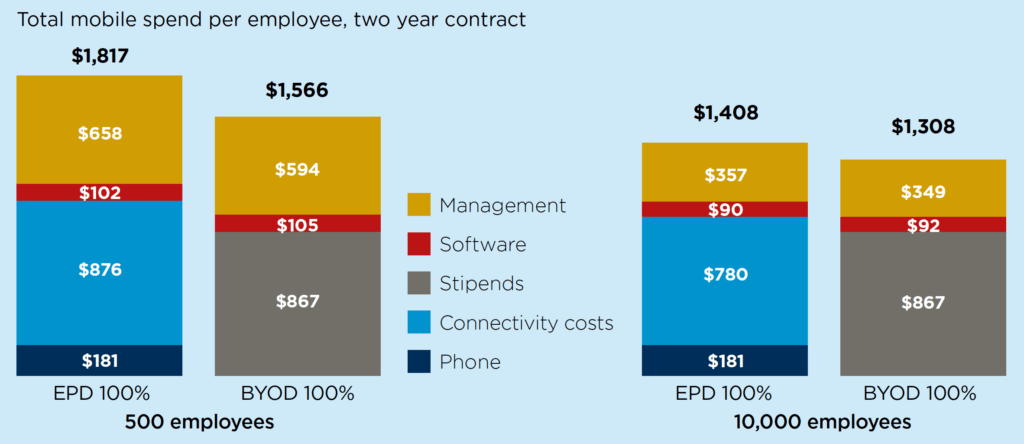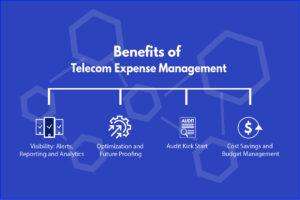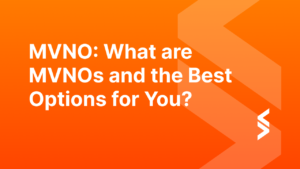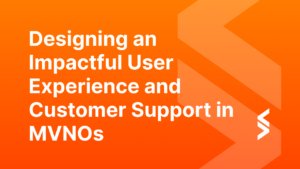
TEM definition and how it relates to the Enterprise Mobility Policy
Most businesses, large and small, depend on telecom and related digital products and services to some degree, often to a business-critical level. How an enterprise procures and manages these services can make a big difference to the cost, and as a business enabler, as well as the return on investment. But what is Telecom Expense Management?
TEM meaning can be different for businesses and professionals let’s define and deconstruct TEM better here:
TEM Definition: Telecom Expense Management (TEM) enables businesses to order, provision, support and manage costs of telecom services and their inventories. TEM usually also includes business intelligence (BI), reporting, and analytics suitable for driving action at a strategic and operational level.
Enterprise/Global Mobility Policy Definition: a policy governing the approach to work where employees are able to work from assorted geographies (office and non-office locations) using a variety of mobile devices, applications, and data management principles.
Of course, there are always variations to definitions to meet specific enterprise needs, and that’s fine. Find the definition that works for you and establish your own enterprise mobility policy and TEM approach that fits your business and workforce needs.
You may also find people referring to this area using terms such as TEM telecom, telephone or telecommunications expense management, enterprise telecom management, and of course components such as telecom expense management system or software, telecom expense reporting, and so on. These are the same areas of focus so don’t get confused when you hear such terms.
Why is Telecom spend so important?
According to Gartner communications-related spend represents around 36% of total IT expenses (global view).

Source: Gartner (January 2021)
Forrester Research (link here via telecomlead.com) suggests that 7.6% of total IT spend is on mobile/cellular/wireless connectivity services. These are big numbers and so need to be carefully considered.
The direct cost is one thing, but you also need to consider the efficiency in managing the mobility policy and TEM practices; overheads that are often invisible. The June 2018 Oxford Economics survey report ‘Maximizing Mobile Value: Is BYOD holding you back?’ suggests that management overheads can be as much as 75% over and above connectivity costs. So, for every $100 spent on your mobile service provider, you could incur $75 more hidden costs on management and administration.

Source: June 2018 Oxford Economics survey report ‘Maximizing Mobile Value: Is BYOD holding you back?’
If you don’t know how much time and resource is spent on your TEM and mobility policy management, it’s worth an exercise to assess – the results may surprise you. Also, check out this article on TEM services (outsourcing your TEM and enterprise mobility policy) that can help to simplify and improve TEM outcomes whilst reducing costs.
The shifting dynamic to mobility
In the not-so-distant past, TEM was quite a mixed bag of communications products and services. And it still is for some businesses. But in recent years, and with a major emphasis during the COVID-19 pandemic, products, and services that enable mobility are now more prevalent. Significant movements from fixed line to mobile service connections are seen across the board in multi-play communications service providers.
The signs are that this trend will continue, especially as 5G (and not-so-far-away 6G) networks gain traction. With increasing mobile data speeds and bandwidth comes numerous fixed PBX alternatives; fixed line telecom services might soon become more of a niche backup/redundancy option as the workforce and customers are increasingly engulfed in the mobile trend.
Accordingly, we envisage TEM increasingly focused on mobile services and associated elements.
Benefits of Telecom Expense Management Software :
What does TEM mean in practice? As the name suggests, TEM features cost control as a primary component. But there’s more to it than just cost management. In effect, TEM is the process for administering the telecom products and services across your business and workforce from procuring to pay. As such, TEM is tied to your enterprise/global mobility policy and acts as a policy management layer. TEM also often includes expense management software to improve the efficiency and effectiveness of what is otherwise a rather complex and manual activity. TEM can focus only on the services piece or can also include related hardware/devices and other IT/software components.

Let’s take a look at the various components in a bit more detail…
Visibility: Alerts, Reporting, and Analytics
Data is king! With access to the underlying telecom inventory, data, and spend/bills, the ability to visualise expenses by business unit, geography, department, and employee is enabled. Of course, telecom expense reporting can be done on spreadsheets but having a platform to do it for you automatically and present the right dashboard and drill-down views works wonders. It puts you in control of the costs. Overcharges and billing errors are quickly identified with TEM and cases would be evidenced for recovery from the service provider.
With near-real-time access to the data, you can also become proactive in addressing issues with users and teams where over-spend, unauthorised activity (e.g. roaming) or fraud (e.g. PBX hacks or service resale) is spotted. Unused services or devices are quite a common problem in business, for example departing employees – it’s hard to keep track of the change volume without a specialist TEM process or system. TEM services can really help to proactively identify unused services and stop the billing for these immediately.
Apart from standard reporting, automated alert features are great for the rapid detection of issues. These alerts are usually configured within the TEM software or platforms you employ and can be at any level: country, department, team, user, etc. Early notification of high usage for example can ensure rapid control and significant cost savings.
Optimization and Future Proofing
With TEM in place, you can let the experts take the lead in optimizing your telecom spend and related policy. Whether it’s an in-house team or an outsourced partner, they should know what they’re doing. With experts looking at the data and managing the procure-to-pay process you can generally be sure of great improvements to what you buy, the nature of the contract, how it is used, and how it is managed. Oh yes, and how much it cost you…the data will usually show where costs can be trimmed and enable informed procurement and negotiation positions with your service or hardware providers.
Payments can be administered automatically with built-in audit and control points to satisfy even the strictest Finance and Audit teams. And reducing the need for bill and payment reconciliation frees up time from your Finance Operations function. Everyone wins.
Where TEM solutions are used, these typically take the brunt of interfacing to your core systems. It’s often way less distracting to engage the partner to update the interfaces when your core systems change than doing it yourself. And of course, many vendors add and curate standard APIs to their integration stack for off-the-shelf use in many popular business technologies.
With the continuous improvement of your TEM in place, onboarding new resources into your mobility policy becomes increasingly straightforward. Policy and process continue to improve. Efficiency and effectiveness reign.
Audit Kick Start
TEM enables inventory management of your telecom assets, for example, SIM cards and devices. If you decide to utilise a TEM software or services partner, then the move to that approach will also facilitate a deep dive into your current setup – most solution and services providers would start with a detailed audit of your current model. With that audit, you really get a great picture of the opportunity for change – a real kick-start to the continuous improvement journey that TEM enables. For example, are your mobile services procured with the right quality-cost balance, or are there immediate wins to take advantage of? The audit is a great way to take stock of your position and make a change for the good.
Cost Savings and Budget Management
Budget management has a strong element of cost focus and so a TEM approach that keeps both Finance teams and budget holders happy is ideal. Real-time or monthly reporting clearly adds a lot of value to cost and budget management, but you can also use the data to project costs and better estimate budgets. Good TEM solutions include such features and enable informed negotiations with your service providers for fundamental contract and cost changes.
Combining with the department views and alerts above, your TEM approach can really make a significant cost difference to your business and improve future budgeting confidence, meaning funds can be allocated to core business instead of over-allocated to telecom expenses.
Enterprise / Global Mobility Policy
Nothing has shown the need for an enterprise mobility policy like the COVID-19 pandemic. If you didn’t have one before, you probably do now, albeit possibly in a condensed and hurried form. No matter the format, the purpose is to provide a common approach to the workforce in mobile working. Setting standards, defining operational parameters, and making rules for use and abuse that need to be followed. See our template enterprise mobility policy here.
Engage the TEM services and software experts
iSimplexity provides a web-based Telecom Expense Management (TEM) system (SaaS – Software as a Service) for the full range of TEM services that any business – large or small – may need: telecom expense reporting, alerts and cost control, inventory management, user administration for mobility policy etc.
We also offer expert outsourced TEM services as a trusted partner, freeing your own resources to focus on your core business goals. Services could be small, for example, simply managing SIM card or device inventory, or more significant, for example overseeing MDM, service provider interface and support to negotiations for contract and cost improvements.
And if your business is in the USA, there is also the option for further cost reduction via our integrated business mobile service retail marketplace and extended service offerings based on our deep-link engagements with network operators. Contact us for more information.



